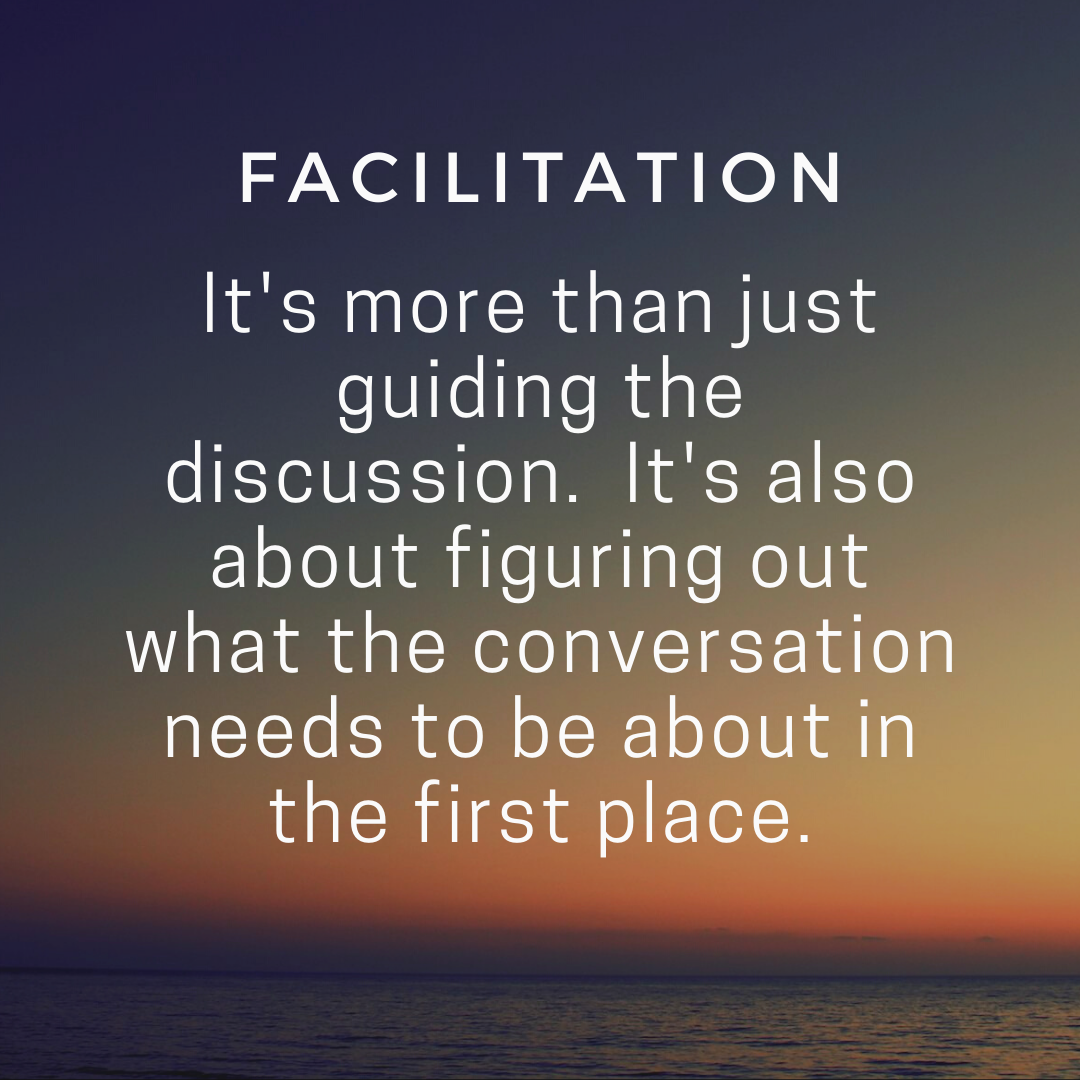
Have you ever explained what you do for a living and when you are done explaining the person you are speaking to still has no idea of what you are talking about? I have experienced this quite often throughout my local government career, so I usually come up with a pretty brief explanation of what I do. I usually say, “I work in the Department where you pull your permit when you want to build something.” That usually does the trick. However, this also happens quite often when I try to explain “facilitation” to someone who has never experienced it. Those who have participated in a facilitated process usually remember creating a list, brainstorming ideas, using post-its or markers and how all the ideas magically aligned at the end of the session.
After 2020 left us in a current recovery mode, I can’t help but feel that we entered a time where the need for facilitation is greater than ever. The isolation over the last several months has left many of us almost craving in-person re-connection. There are projects, community engagement workshops and strategic planning sessions that have been delayed as a result of the pandemic. As a fellow facilitation nerd, I am definitely anticipating facilitating in-person sessions in the near future.
According to www.td.org, “facilitation is the act of engaging participants in creating, discovering, and applying learning insights. In contrast to presentation, which is typically characterized by a “sage on the stage” delivering content to an audience, facilitation usually involves a “guide on the side” who asks questions, moderates discussions, introduces activities, and helps participants learn. This necessary and evolving skill is particularly important for talent development professionals who conduct in-person or virtual training, but other professionals can also use it to facilitate team projects, task forces, committees, and meetings of any type.” In an effort to re-invigorate the facilitation juices in all of us, I would like to share three nuggets of information to get you started or re-introduced to facilitation.
#1 – Reading Recommendation – The Art of Gathering by Priya Parker was one of the many books I read during 2020 and it was a bit strange reading about gathering in a time of physical isolation. I was able to re-live her moments and gain insight on an advanced level of facilitation and gathering. This book isn’t a compilation of “how-to” or examples of ice breakers, it’s a deep dive into the meaning of gathering. It’s an eye-opening glance into the world of an expert facilitator and event planner. If you want to learn how to do it right, pick this up and enjoy.
#2 – Reflection Agenda – A conversation reflecting on a shared experience, project or event is a game changer. Many of us don’t take enough time evaluating and reflecting on our lessons learned from experiences. I get it. I’m guilty of it too, but I can only imagine how much we would improve the design of future projects, programs and events, if we took the time to reflect on what went right, wrong and what we could learn from it. To encourage this practice, I’m providing a quick list of questions that could be used to facilitate these conversations. These questions should be incorporated into the overall agenda. It’s important to have an agenda when you facilitate a meeting. According to Susan B. Wilson, “meetings without an agenda are like a restaurant without a menu.” Here is a quick set of questions that can be used:
- What went well?
- What could have been improved?
- What did you learn from it or what are some take-aways?
- What can we do using what we learned to improve our process in the future?
Tips: Ask them in the order listed above. Allow enough time for the responses to flow. If the group isn’t familiar with each other, add an ice breaker prior to jumping into the conversation.
#3 – “What’s in a Name?” Ice Breaker – One of my favorite ice breaker activities is to ask meeting participants how they were named or if their name has a special meaning. It’s a simple question, but the answers vary greatly, from not knowing how they were named to more complex stories. It’s always a great way to get to know each other before diving into a deeper conversation. Remember to set the expectation and give the maximum time limit. As a facilitator, one of your roles is to be the timekeeper.
Since everyone has a name, this creates a level playing field of participation. In facilitation, foundational principals include participation and engagement. This exercise creates a very low risk opportunity for all to share and participate. Benjamin Franklin said it best, “Tell me and I forget. Teach me and I remember. Involve me and I learn.”
My intention is that these three nuggets will help spark that need and eventually love for facilitation. Go forth and facilitate.
